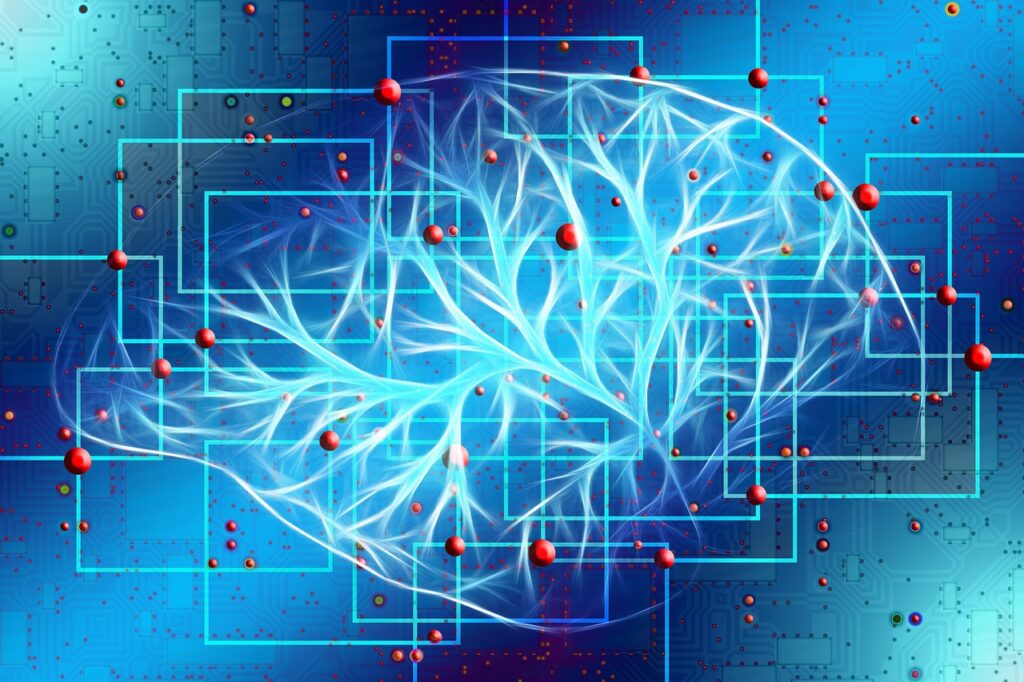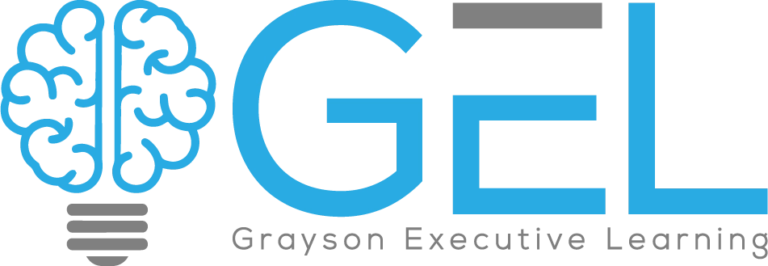
ADHD and hyperfocus isn’t just about inattention—it’s difficulty regulating attention. If you’re a parent of a teen with ADHD, you’ve likely seen hyperfocus in action—when they get so absorbed in an activity that they lose all sense of time, ignore hunger, and tune out the world.
So why can they focus for hours on video games or art but struggle with schoolwork? ADHD brains have trouble shifting gears, making hyperfocus both a superpower and a challenge. When managed well, it fuels creativity and learning. Left unchecked, it leads to missed responsibilities and late nights.
This guide will explore the science behind hyperfocus and neurodivergent brains, when it helps, and how to manage it—without stifling your teen’s passions.

What Is Hyperfocus? The ADHD Brain’s Unique Relationship With Attention
Hyperfocus is exactly what it sounds like—an intense, almost obsessive state of concentration where everything else fades into the background. Teens in a hyperfocus state can spend hours locked into a single activity, completely unaware of time, hunger, or even the fact that they were supposed to start their homework two hours ago.
This might seem contradictory to the typical struggles of ADHD, where distractions constantly pull attention in different directions. But ADHD isn’t really about not paying attention—it’s about difficulty controlling where attention goes. Instead of shifting smoothly between tasks, the ADHD brain either struggles to engage or gets completely stuck.
Why this occurs lies in brain chemistry. ADHD is linked to lower levels of dopamine, the neurotransmitter responsible for motivation, reward, and focus. Activities that are boring to the attention-challenged brain—like math homework or organizing their backpack—don’t trigger enough dopamine, making it hard to stay engaged. But activities that are interesting, exciting, or rewarding flood the brain with dopamine, making it easier to stay locked in.
Hyperfocus in Action: When ADHD Locks In
Hyperfocus can lead to incredible creativity and skill-building—or derail responsibilities and daily life. Certain activities are more likely to trigger it, pulling the ADHD brain into deep concentration.
Common examples of hyperfocus:
-
- Gaming and Social Media – A “quick game” turns into hours, with homework forgotten.
-
- Creative Hobbies – A simple sketch turns into an all-day project, with texts and chores ignored.
-
- Deep Research – A school assignment leads to hours of unrelated YouTube documentaries.
-
- Binge-Watching – One episode turns into a full season, and suddenly it’s past midnight before a big test.
-
- Perfectionist Projects – Hours spent reorganizing a bookshelf while ignoring laundry and assignments.
While hyperfocus can be frustrating, it isn’t always a bad thing. The key is balance—helping teens use it as a tool rather than a barrier.
How ADHD Brains Regulate Attention Differently
In a neurotypical brain, attention works like a dimmer switch, smoothly adjusting focus depending on the situation. Need to finish homework? Turn up the focus. Time to switch to another task? Dial it down. But in the ADHD brain, attention regulation is more like a faulty light switch—sometimes flickering on and off, other times stuck on full blast.
This happens because of differences in executive function, the brain’s ability to manage tasks, regulate focus, and control impulses. Executive function is controlled by the prefrontal cortex, which in ADHD brains develops more slowly and functions less efficiently. This makes it harder to shift gears between tasks, leading to either scattered focus or intense fixation.

Why Transitions Are So Hard
One of the biggest challenges of hyperfocus is task switching—going from one activity to another, especially when shifting from something enjoyable (like gaming) to something less stimulating (like homework). Because the neurodivergent brain struggles with cognitive flexibility, moving between tasks feels abrupt and jarring. This is why sudden interruptions can trigger irritability, frustration, or even shutdowns.
Understanding the neurological roots of hyperfocus helps explain why it’s so powerful—and why your teen can’t always “just snap out of it” when you tell them to. But while hyperfocus can be frustrating, it also has major benefits when used correctly.
The Upside Of Hyperfocus: How It Can Be A Strength
Hyperfocus isn’t always a bad thing. When directed productively, it fuels learning, creativity, and success. Many innovative thinkers, artists, and entrepreneurs with ADHD credit hyperfocus as a key to their achievements.
-
- Deep Learning & Mastery – Teens with ADHD can absorb information quickly when passionate about a subject, spending hours perfecting skills like coding, music, or space trivia.
-
- Creativity & Innovation – Hyperfocus helps teens pour intense concentration into creative projects, from writing a short story to designing digital art or composing music.
-
- Academic Strengths – While school can be tough, hyperfocus helps when subjects align with their interests. Passion for science, history, or engineering can lead to deep research and academic success.
The key is guiding them to apply hyperfocus to tasks that matter—even the less exciting ones.
The Downsides of Hyperfocus
Hyperfocus can be a strength, but when unmanaged, it may lead to lost time, ignored responsibilities, and difficulty switching tasks.
-
- Time Blindness – Teens lose track of time, turning “10 more minutes” into hours, leading to missed assignments, skipped meals, and poor sleep.
-
- Struggles with Transitions – Shifting from an enjoyable task to homework or bedtime can feel nearly impossible, often causing frustration or refusal.
-
- Neglecting Responsibilities – Teens may prioritize interests over daily tasks, like gaming instead of homework or forgetting to eat and shower.
-
- Emotional Reactions to Interruptions – Pulling a teen out of hyperfocus can feel jarring, leading to anger, shutdowns, or meltdowns.
-
- Hyperfocus on the Wrong Things – Some teens fixate on social media, video games, or perfectionism, making it a barrier rather than an advantage.
Hyperfocus shouldn’t be eliminated—the goal is learning to manage it effectively.
Helping Your Teen Manage Hyperfocus In Daily Life
Hyperfocus can’t be turned off, but teens can learn to recognize and manage it. The goal is balance—staying engaged in passions while keeping up with responsibilities and self-care.
Helping Your Teen Recognize Hyperfocus:
-
- Track focus habits – Identify activities that trigger hyperfocus and how long they last.
-
- Spot warning signs – Look for cues like tuning out, ignoring hunger, or losing track of time.
Building awareness is the first step to using hyperfocus productively instead of letting it take over.
Teaching Self-Awareness And Transition Skills
Since transitions can feel abrupt and frustrating, helping your teen ease out of hyperfocus instead of forcing an immediate switch can make a huge difference.
-
- Use countdowns. Give a 10-minute, 5-minute, and 1-minute warning before they need to switch tasks. This gives their brain time to prepare for the transition.
-
- Try “buffer activities.” Moving directly from hyperfocus to a low-stimulation task (like chores or homework) can be jarring. Instead, introduce a neutral activity—like stretching, getting a drink, or taking a short walk—to create a smoother transition.
-
- Practice self-check-ins. Teach them to pause and ask themselves, How long have I been doing this? What else do I need to do today? Checking in with themselves periodically can help them regulate their focus.
-
- Create an exit phrase or signal. Have a specific phrase or gesture (like a tap on the shoulder or a simple “wrap-up mode”) that signals it’s time to start transitioning out of hyperfocus. This can help avoid frustration or sudden emotional shutdowns.
-
- Pair transitions with a small reward. Motivation helps ADHD brains shift gears. Encouraging something small—like a favorite snack or a quick song break—can make moving on to a less exciting task feel less painful.
-
- Use external accountability. A simple check-in from a parent, friend, or study partner can act as a gentle nudge out of hyperfocus, making it easier to switch to the next activity.
-
- Adjust the environment. If they’re deeply focused on a task, changing something physical—like dimming the lights, closing their laptop, or playing background music—can serve as a natural transition cue.
-
- Use timers or alarms. Set periodic reminders to encourage short breaks for eating, stretching, or checking in with responsibilities.
-
- Try the Pomodoro technique. This method involves working in focused bursts (25-45 minutes) followed by a 5-10 minute break to reset their attention.
-
- Encourage physical movement. A quick walk, jumping jacks, or even standing up for a minute can help break the hyperfocus cycle without fully disrupting productivity.
-
- Use body doubling. This technique—working alongside someone else—can help them stay aware of time while still allowing for deep focus.

ADHD and Hyperfocus In High School: Academic Strategies That Work
Hyperfocus can be a strength or a struggle in school. A teen might produce their best work on a favorite subject but get stuck perfecting one detail while ignoring the rest of their homework. The key is structure, awareness, and learning to shift focus when needed.
Helping Your Teen Stay on Track
-
- Break tasks into steps – Small, clear tasks prevent getting stuck. Instead of “Write an essay,” try:
-
- Research topic (20 min)
-
- Outline main points (15 min)
-
- Write first paragraph (15 min)
-
- Break tasks into steps – Small, clear tasks prevent getting stuck. Instead of “Write an essay,” try:
-
- Use the 80% rule – Aim for “good enough” instead of perfection. A finished assignment is better than an incomplete one.
-
- Try productive procrastination – Start with a related, engaging task (like journaling before reading an assigned book) to activate focus.
-
- Use study sprints – Short bursts (25 min work, 5 min break) help maintain focus without burnout.
Signs That Hyperfocus Is Becoming A Problem
-
- Declining grades – They spend hours on one task but neglect others.
-
- Escapism over responsibilities – Video games, social media, or hobbies take priority over homework, hygiene, and sleep.
-
- Irritability when interrupted – Frustration is normal, but extreme anger or shutdowns may signal a deeper issue.
-
- Social withdrawal – They isolate themselves, prioritizing interests over friendships.
-
- Emotional fixation – They obsess over mistakes or negative thoughts, struggling to move on.
If hyperfocus is disrupting daily life, intervention and support may help.
How ADHD Coaching Or Therapy Can Help
If your teen struggles to regulate hyperfocus, ADHD coaching or therapy can provide valuable tools. ADHD coaches focus on executive function skills, helping teens shift focus, set boundaries, and build better habits. Cognitive Behavioral Therapy (CBT) teaches strategies to manage hyperfocus when it becomes disruptive. Family therapy can improve communication and ease tension caused by hyperfocus-related challenges.
Does Medication Help With Hyperfocus?
Many parents wonder whether ADHD medication can help with hyperfocus. The answer? It depends.
Stimulant medications like Adderall or Ritalin don’t eliminate hyperfocus, but they can help regulate attention and make transitions easier. Instead of getting stuck in a deep-focus spiral, a teen on medication may find it easier to shift tasks and disengage when needed.
That said, medication isn’t a cure-all. It works best when paired with structure, strategies, and self-awareness. If hyperfocus is a major struggle, talking to a doctor or psychiatrist about medication options might be worth exploring.
Building A Support System
Your teen doesn’t have to manage hyperfocus alone. ADHD support groups offer connection and shared experiences, while peer mentors provide real-world strategies. Parent support groups can also offer guidance and encouragement. If hyperfocus is affecting your teen’s well-being, outside support can make a big difference. ADHD isn’t just about focus—it’s about learning to work with their brain, not against it.
Conclusion: Embracing Hyperfocus As Part Of The ADHD Journey
ADHD and hyperfocus isn’t something to “fix”—it’s a unique trait that, when managed well, can be a strength. While it may cause challenges like lost time or ignored responsibilities, it also fuels creativity, learning, and deep focus.
Your role as a parent is to help your teen find balance—recognizing when hyperfocus is productive and when it leads to burnout. Encourage strategies that support task-switching, set boundaries, and remind them that ADHD isn’t a flaw—it’s a different way of thinking.
With the right tools and support, your teen can harness hyperfocus to succeed in school, relationships, and life. ADHD comes with challenges, but also incredible potential—and that’s worth celebrating.




